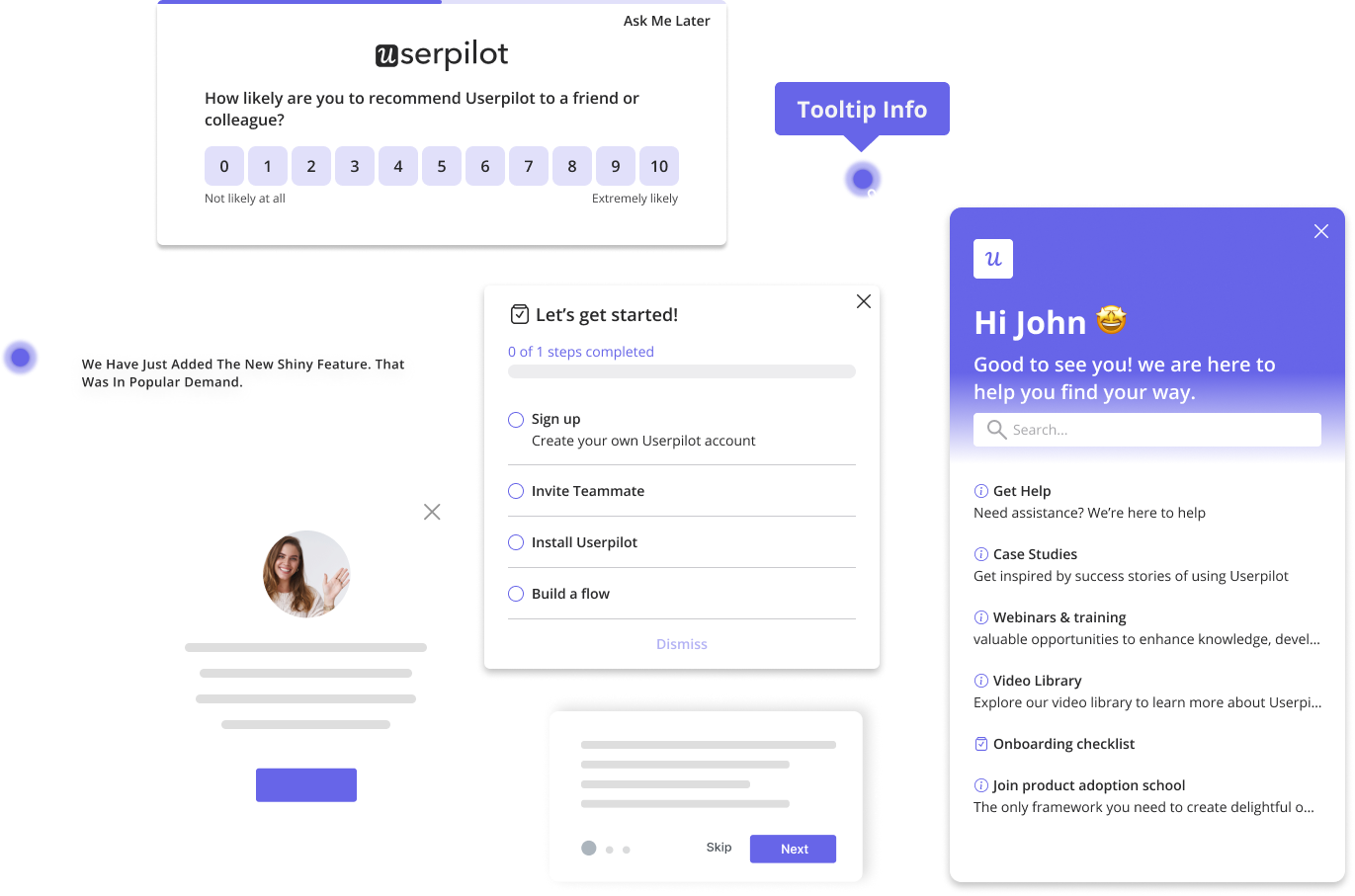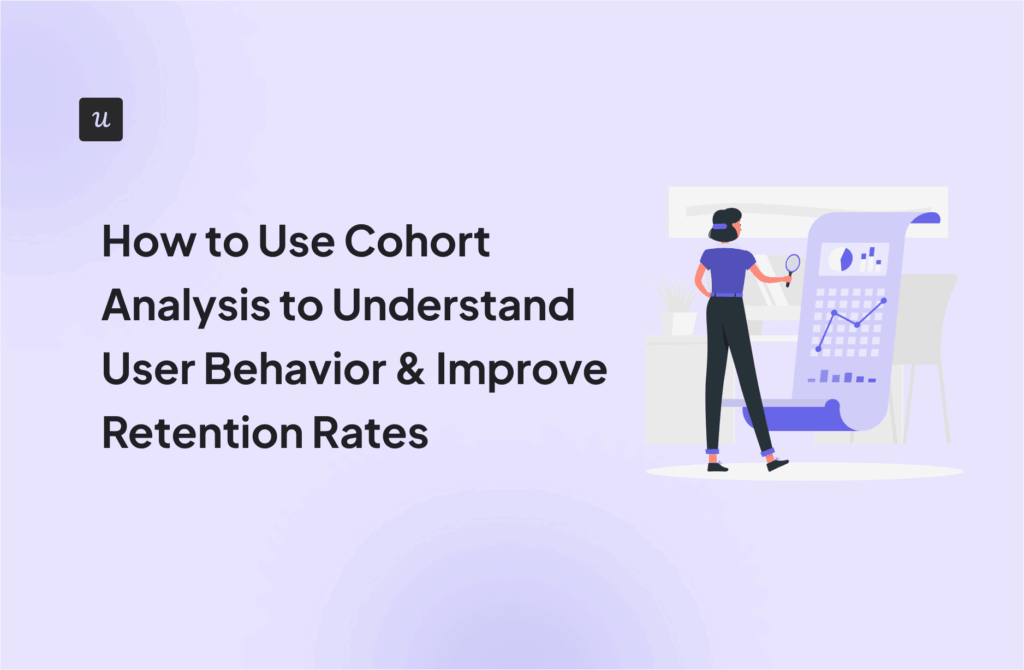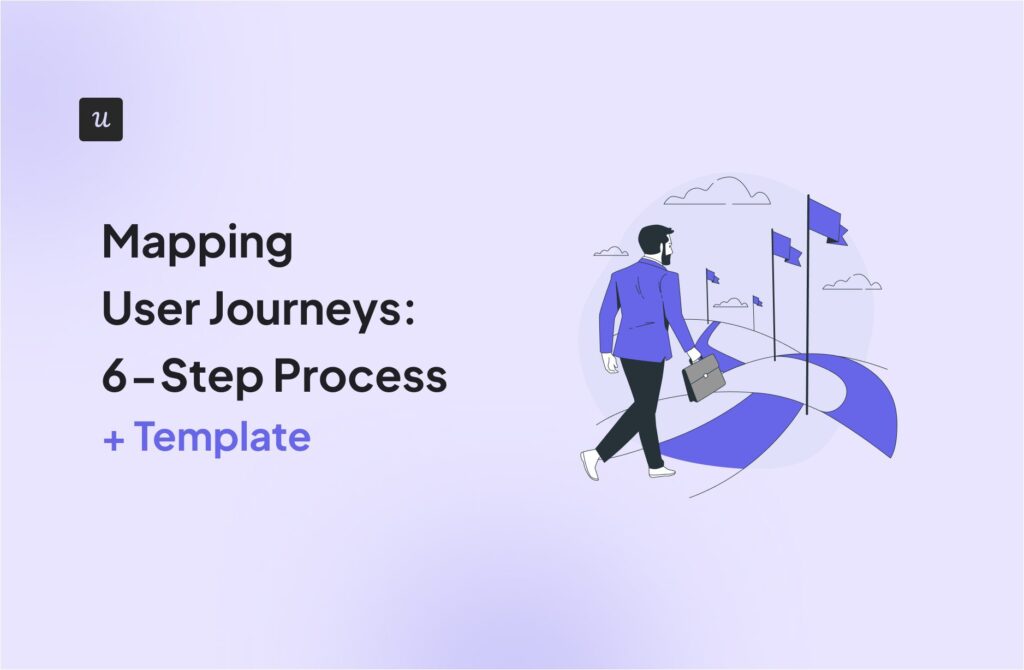
For a great UX design, you need well-defined UX personas that encapsulate your target users’ goals, frustrations, and motivations. This approach helps shape technology around actual, not assumed, customer needs and behaviors.
In this article, I’ll walk you through what UX user personas are, why they matter, and how you can create personas to guide product decisions.
How does your team currently approach User Persona UX creation?
How do you gather data to inform your user personas?
How are your user personas used in your product development cycle?
Ready to build data-driven personas and make them your product’s North Star?
A strong User Persona UX process is built on a foundation of continuous research and application. Userpilot can help you gather behavioral data, collect in-app feedback, and deliver personalized experiences based on your personas.
Try Userpilot Now
See Why 1,000+ Teams Choose Userpilot
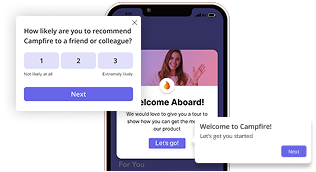
What are user personas in UX?
In UX, a user persona represents a fictional but realistic character that reflects your product’s target user. It’s built from real data on your user base, collected over time through user interviews, behavior tracking, and usability testing.
All this user research helps create strong personas that go beyond demographics and instead capture a deeper understanding of user needs, pain points, goals, and behaviors. Basically, all the key factors that influence how someone interacts with your product.
For example, knowing a user’s preferred device (desktop vs. mobile) can guide design decisions to better tailor the product experience on that device.
It’s also worth noting that personas can overlap. For example, two personas might complete some of the same tasks or share similar workflows. This signals a good product-market fit and a well-thought-through design. The solutions you provide should work for multiple use cases and many types of roles at once.
Lastly, keep in mind that personas aren’t the same as user groups. User groups are broad categories often defined by statistics, like “Marketers in mid-sized companies.” Whereas a persona takes that data and turns it into a relatable, specific character your team can understand, empathize with, and design for.
Three UX user persona types
Not all UX personas are created the same. What type of persona you use depends on your research phase and product lifecycle stage.
Proto persona
Proto personas are quick profiles created when time or research resources are limited. Instead of being built through a dedicated research project, they’re typically developed in a workshop setting, using:
- Insights from customer-facing teams.
- Any existing product data you already have, such as sign-up info or usage patterns.
- Informed assumptions where data is missing.
Proto personas are useful when you’re just getting started or need to move quickly. They help align teams on a basic idea of who they’re designing for.
For example, if you’re tackling a new use case and don’t have related user data yet, creating a proto persona can guide early design concepts. You can then take these early designs into user testing with real participants, who serve as the basis for your qualitative personas.
The downside of proto personas? A part of them relies on (educated) guesswork, making them inherently less accurate and prone to bias.
Qualitative persona
These personas are created using qualitative insights from a smaller sample size of real users, typically through:
- Interviews.
- Observational studies.
- Usability tests.
Usually, anywhere between 5 to 30 users are considered enough for this type of persona.
Qualitative personas offer a well-rounded view of your typical users that’s grounded in real conversations. It’s especially helpful for understanding aspects such as user decision-making processes, workflows, and emotional drivers.
However, qualitative personas come with cons, too. They’re limited by a small sample size, so any trends you notice may not represent the broader target audience.
Statistical persona
Statistical personas combine qualitative insights with quantitative data, making them the most accurate and scalable option. They’re built using:
- User interviews to identify key themes, e.g., goals or behaviors.
- Surveys to validate those themes.
- Product analytics to uncover usage patterns at scale.
With enough responses, you can segment users based on statistically significant behaviors or needs.
For example, after interviews reveal a trend, you might run a survey and discover that 60% of users share a specific feature usage pattern. That insight becomes the basis for a strong, data-backed persona.
Unfortunately, such a level of accuracy has its costs. Statistical personas require time, effort, and access to solid data, so they’re not ideal for early-stage teams or tight timelines.
Why should UX personas matter to your product team?
I believe effective user personas aren’t just another UX exercise. They’re a powerful tool for getting my team focused on solving a real user problem instead of just shipping features. Here’s how they make a difference:
Building empathy and focus
When you try to design for everyone, you end up designing for no one. Personas help us zoom in on a specific person with real pains and goals, instead of just another data point. This clarity introduces more empathy in our UX design.
When my team discusses a new feature, we ask, “How would Sarah feel about this change?” or “Will this help David complete onboarding faster?” This anchors our decisions in real user needs, moving discussions away from personal opinions and helping us create more focused, frictionless experiences.
Informing design decisions
Well-defined persona descriptions act as a common language for the whole product team. This way, when we talk about “Savannah,” everyone instantly recalls her needs and behaviors without having to revisit the user research findings.
This shared understanding speeds up decision-making. And it prevents us from building unnecessary features that don’t serve our typical user.
Summarizing complex customer insights
Research data can get messy, with interview notes, long surveys, and endless feedback threads. Personas help organize that chaos. They compile all these complex customer insights into a more digestible format that’s easier to share.
I often use them to communicate findings. So, instead of presenting a 20-slide deck to stakeholders, I just share a single persona. A quick glance at it helps everyone understand who we’re designing for and why certain decisions make sense, facilitating buy-in across teams.
Driving product growth
By designing for specific, well-understood users, we naturally create a more intuitive product experience, with personalized onboarding and better in-app guidance. This leads to higher product adoption, improved user engagement, and better customer retention.
When to create UX personas?
Short answer: As early as possible. Ideally, UX personas should shape your product decisions from day one, so all work is based on real data.
Some other key moments to create user personas include:
- At the start of a project: Before any design work begins, use initial research to start shaping personas. This way, your product is grounded in real user needs, not assumptions.
- When targeting a new audience or use case: New problems require fresh insights. Even if you’ve built personas before, revisiting them keeps your design efforts aligned with changing user behavior.
- If user feedback shifts significantly: When you notice changing patterns in feedback or usage, it may be time to update your personas to reflect your evolving audience.
What should a UX persona profile include?
A useful persona isn’t packed with unnecessary details. Rather, it focuses only on information that affects how users interact with your product. To keep our profiles lean but informative, here’s everything we collect during the persona creation process at Userpilot:
- Demographic information: Things like age or background often don’t impact product behavior. Instead, we focus on role, company type, and location. These help the design team understand different use cases, cultures, and user types.
- Time spent as a user: Knowing how long someone has used the product (e.g., “signed up a year ago”) helps correctly assume feature onboarding needs and advancement level.
- Needs and JTBDs: What do the users need to accomplish that your product can help with? Understanding this reveals the key tasks your UX must support.
- Painpoints and challenges: What problems or frustrations do users face in their day-to-day tasks or workflow? Identifying these helps you design solutions that address real issues.
- Goals using the product: What outcome are they hoping for, and which features will help them achieve it? Personas’ goals dictate which product experience they’ll find valuable.
To better understand how all this information fits into building a persona, here’s a user persona example of a product designer. And it works great as a user persona template too.

How to create user personas for UX in 4 steps?
Drawing from years of product design experience, here’s a step-by-step guide on how to create a persona that’s grounded in user behavior.
1. Choose your persona type
Start by deciding which of the three different types of personas you’re building. Since each type fits a different stage of the product lifecycle, here’s how to decide when to pick which:
- Proto personas: Use during the early stages when you haven’t done complete user research.
- Qualitative personas: Best for lean teams, especially ones that can’t afford to spend much time and resources on data collection.
- Statistical personas: Use when you need very accurate personas. Ideal for teams with sufficient resources and access to relevant statistics.
The persona type you pick here will determine which research methods you choose moving forward.
2. Conduct user research
Once you’ve chosen your persona type, it’s time to gather data. Let’s go over all the possible ways you can do so. The more methods you combine, the stronger your final persona will be.
Track product usage and user behavior data
Start with what you already have. Dig into existing product analytics data to understand current behavior patterns such as:
- Most-used vs. ignored features.
- Drop-off points in key flows.
- Feature adoption and product usage rates.
- Ideal customer paths that lead to conversion or activation.
Tracking these events and funnels reveals real behavior that might not be obvious from assumptions or feedback surveys.

Watching session replays can also show a lot about the user, adding context to their navigation habits, interaction patterns, and user friction in real time.

This kind of data can help you formulate hypotheses about user goals, favorite features, and friction points, which are ideal for proto personas.
For example, session replays show new users often skip the “Import Data” feature but spend time exploring the dashboard. So you hypothesize that they prioritize quick insights over setup. That could lead to a proto persona like “The Impatient Analyst”, someone who wants to get value in under five minutes.
Get insights from customer-facing teams
Your sales, support, and customer success teams talk to users every day. So, they probably have a lot to tell you about:
- The most frequent user problems.
- Most common use cases of your product.
- Where users typically get stuck or churn.
I also suggest asking to watch a few recommended call recordings with representative clients. Such conversations often reveal tone (e.g., urgency, confidence), frustrations, and motivations you won’t find in a dashboard. These add nuance to your persona beyond what raw data has to offer.
Conduct user interviews and run focus groups
For a more personal approach needed for building qualitative personas, talk to your users directly. Here’s how:
- One-on-one interviews: Ask open-ended questions to learn more about a specific user issue. Ensure the type of questions corresponds with the information you need to fill in your user persona template later.
- Focus groups: These help you identify shared behaviors or unmet needs across a broader audience. For example, if several users in a group say they use workarounds to build reports, that’s a sign of a broken experience.
I suggest starting with smaller user samples for qualitative personas. Larger samples are better for statistical personas where you need volume to validate trends.
Send contextual surveys
Surveys are great for collecting both qualitative and quantitative data at scale. They help you:
- Measure satisfaction (e.g, NPS and CSAT).
- Gather insights about habits, goals, and pain points.
- Validate themes noticed during interviews or analytics.
But timing matters. Surveys are most effective when sent contextually, triggered in-app after key actions, such as onboarding completion, or via email to targeted segments, like at-risk users.
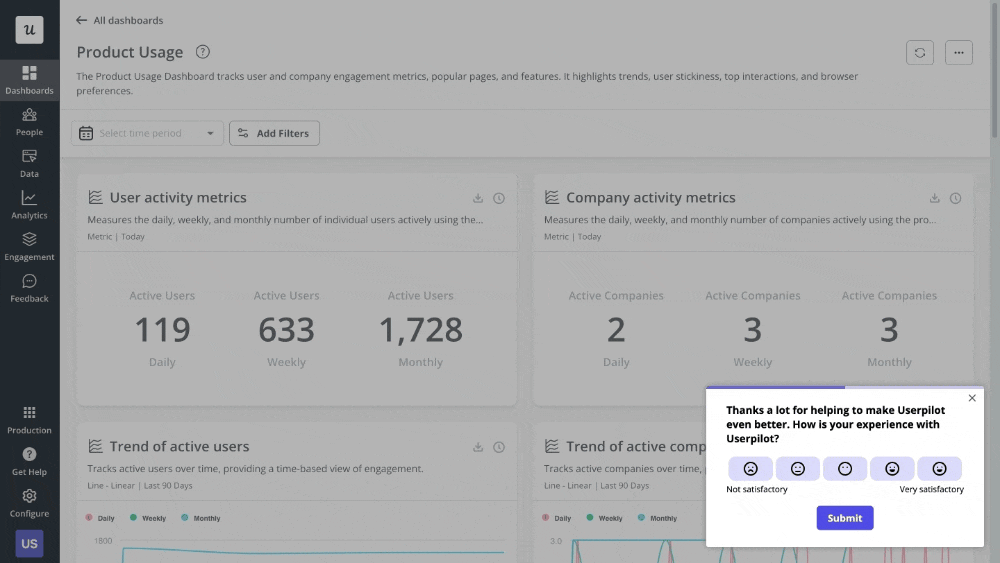
P.S. If you’re creating statistical personas, run surveys to complement your quantitative research. Surveys reveal the why behind user behavior, helping you better contextualize your raw data.
3. Organize your insights
With all your research in hand, you can now start looking for patterns or themes that help you identify different user types.
For example, your initial clusters could include:
- Product managers at B2B SaaS companies with <50 employees.
- Non-technical first-time users who struggle to set up integrations.
- Enterprise admins who use the product for reporting only.
This is the starting point for segmentation and designing more targeted user experiences. Now that you understand what different groups need, you can tailor the product to match their goals.

A word of advice, though: Don’t force categories to match biased internal assumptions. Let the data speak for itself.
4. Build a user persona based on a template
By now, you should have 2–5 distinct personas emerging from your research. The final step is turning those patterns into clear, actionable profiles.
Use your persona template for this (like the one we showed earlier), and fill it with the right data.
Then write a short narrative describing the persona’s situation. This storytelling builds empathy. Because when your team can picture the user as a real person instead of just a data point, they’re more likely to design with care and make decisions that support actual user needs.
Lastly, treat your personas as living documents. As you learn more from new data or changing user behavior, update them regularly, so your personas grow with your product.
Putting personas to work: How to use them in your UX design?
Creating personas is just the start. The real impact comes when you actively apply them throughout your design process. As a Product Designer, here’s how I use user persona UX every day to shape smarter, more relevant user experiences.
Guide your product strategy
When planning new features or a product redesign, we always refer back to our personas. It keeps us focused on real pain points and helps prioritize features that deliver the most value.
Recruit the right participants for usability studies
Personas act as templates for finding the right participants for usability testing. They let us filter and choose users whose traits align with our personas to find insights from only the most relevant audiences. We can further optimize user experiences, keeping focus on our key users’ needs.
Design personalized user flows
Whether we’re mapping out user flows or designing onboarding screens, UX personas inform every step. We always ask, “Would Sasha understand this step?” Or, “Is this the most efficient path for Alex to achieve his goal?”.
This way, we can design tailored in-app journeys that reduce time-to-value for all our different personas.
Segment data based on personas for better analytics
Lastly, personas provide a framework for creating meaningful user segments.
Suppose your persona is “Startup Founder Amy,” a tech-savvy founder who wants a quick setup and automations. So, you might build a segment like: “Startup managers exploring automation features.”
Next, you can track how the segment is using your new automation features. If engagement is low, trigger in-app surveys with Userpilot to gather feedback, or review session replays to spot friction points.
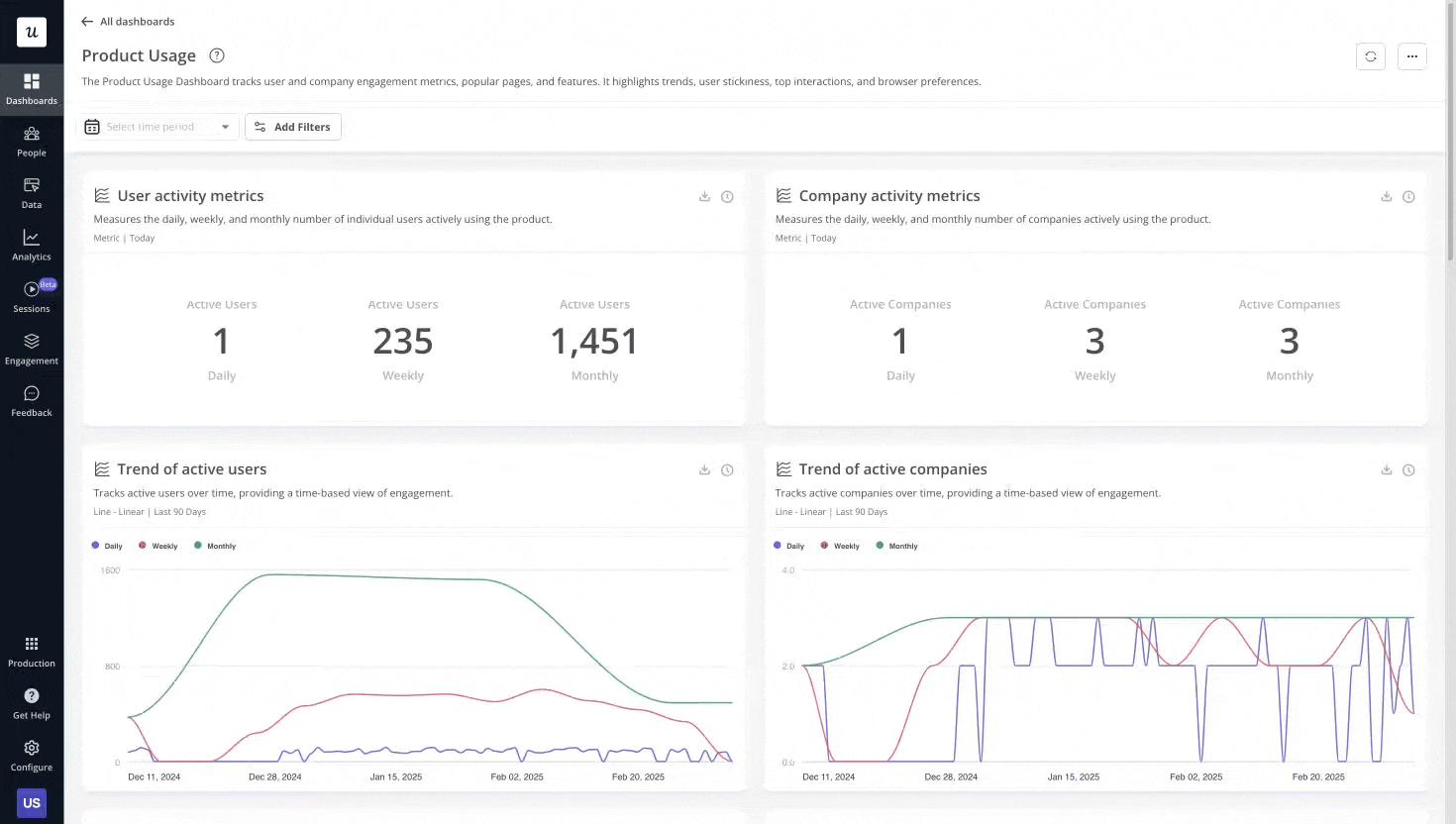
Based on this, you could introduce a guided flow to improve feature adoption or refine the design with your dev team to remove UI obstacles.
Make the most out of your UX user personas with Userpilot
Creating well-researched UX user personas takes time. So don’t rush through it like it’s another checkbox task. Remember: What you’re doing is laying the groundwork for empathy, shared understanding, and ultimately, a user-centered product.
With product growth platforms like Userpilot, you can conduct both quantitative and qualitative research needed to build personas, from identifying behavioral patterns to gathering real-life user feedback. Then, you can use the gathered data to build user segments and personalize the in-app experiences. And all of that happens in one platform, which eliminates the need to send scattered user data between different tools.
Ready to collect all the data you need to create user personas? Book a Userpilot demo today to see how to design tailored in-app surveys, run usability tests, and track usage metrics across segments.
FAQ
What is the difference between user profile and user persona?
A user persona is a fictional representation of a target user, used to guide design decisions based on user needs and goals. In contrast, a user profile is more factual, including real data about a user based on their actual interactions with your product.

